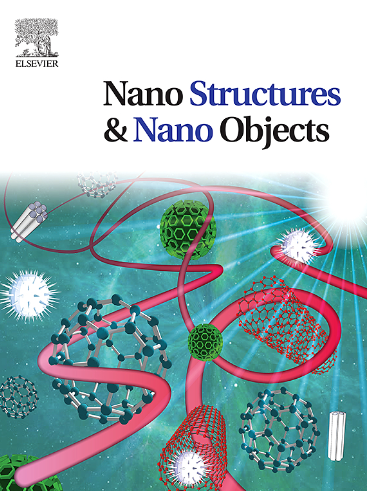先进的mirna -纳米颗粒脑癌治疗策略:绕过血脑屏障进行有效治疗
IF 5.45
Q1 Physics and Astronomy
引用次数: 0
摘要
胶质母细胞瘤是脑癌中最具侵袭性的一种,由于其侵袭性和预后差,一直是治疗上的一大挑战。中位生存率很少超过16个月。由于血脑屏障(BBB)阻止药物进入大脑,治疗变得更加困难。尽管医学和外科技术有所进步,但仍然没有可靠的早期诊断和预后生物标志物,新的治疗方案如免疫检查点抑制剂尚未获得批准。考虑到MicroRNAs在癌症进展中的关键作用以及它们穿过脑脊液和血液的能力,MicroRNAs (miRNAs)已成为胶质母细胞瘤检测和治疗的有吸引力的候选者。最近基于miRNA的治疗方法的发展,包括miRNA模拟物和抑制剂,已经在临床研究中显示出潜力。但其降解难、表达短暂性、靶向性差等问题限制了其临床应用。纳米颗粒(NPs)提供了一种潜在的技术来提高miRNA的稳定性和靶向递送,有效地克服血脑屏障的限制。本文阐述了基于NP的miRNA传递促进血脑屏障渗透的具体特征,NP转运的机制,以及用于胶质母细胞瘤精确诊断和治疗的治疗纳米平台的发展。此外,还强调了miRNA纳米制剂的最新突破,显示了它们改变胶质母细胞瘤治疗的潜力。本文章由计算机程序翻译,如有差异,请以英文原文为准。
Advanced miRNA-nanoparticle strategies for brain cancer treatment: Bypass the blood-brain barrier for efficient treatment
The most aggressive form of brain cancer, glioblastoma, continues to pose a substantial therapeutic challenge as a result of its invasive character and poor prognosis. The median survival rate rarely exceeds 16 months. Treatment is made more difficult by the blood-brain barrier (BBB), which prevents drugs from reaching the brain. Despite improvements in medical and surgical techniques, there are still no reliable biomarkers for early diagnosis and prognosis, and new treatment alternatives such as immune checkpoint inhibitors have not yet received approval. MicroRNAs (miRNAs) have emerged as attractive candidates for glioblastoma detection and therapy, considering their crucial role in cancer progression and their ability to cross the cerebrospinal fluid and blood. Recent developments in miRNA-based therapeutics, including miRNA mimics and inhibitors, have demonstrated potential in clinical studies. However, difficulties like as degradation, transient expression, and poor targeting restrict their clinical applicability. Nanoparticles (NPs) offer a potential technique to increase miRNA stability and targeted delivery, effectively overcoming BBB restrictions. The article addresses the specific features of NPs based miRNA delivery that promote BBB penetration, the mechanisms of NP transport, and the development of theranostic nanoplatforms for precision glioblastoma diagnosis and therapy. Furthermore, the newest breakthroughs in miRNA nanoformulations are highlighted, showing their potential to change glioblastoma treatment.
求助全文
通过发布文献求助,成功后即可免费获取论文全文。
去求助
来源期刊

Nano-Structures & Nano-Objects
Physics and Astronomy-Condensed Matter Physics
CiteScore
9.20
自引率
0.00%
发文量
60
审稿时长
22 days
期刊介绍:
Nano-Structures & Nano-Objects is a new journal devoted to all aspects of the synthesis and the properties of this new flourishing domain. The journal is devoted to novel architectures at the nano-level with an emphasis on new synthesis and characterization methods. The journal is focused on the objects rather than on their applications. However, the research for new applications of original nano-structures & nano-objects in various fields such as nano-electronics, energy conversion, catalysis, drug delivery and nano-medicine is also welcome. The scope of Nano-Structures & Nano-Objects involves: -Metal and alloy nanoparticles with complex nanostructures such as shape control, core-shell and dumbells -Oxide nanoparticles and nanostructures, with complex oxide/metal, oxide/surface and oxide /organic interfaces -Inorganic semi-conducting nanoparticles (quantum dots) with an emphasis on new phases, structures, shapes and complexity -Nanostructures involving molecular inorganic species such as nanoparticles of coordination compounds, molecular magnets, spin transition nanoparticles etc. or organic nano-objects, in particular for molecular electronics -Nanostructured materials such as nano-MOFs and nano-zeolites -Hetero-junctions between molecules and nano-objects, between different nano-objects & nanostructures or between nano-objects & nanostructures and surfaces -Methods of characterization specific of the nano size or adapted for the nano size such as X-ray and neutron scattering, light scattering, NMR, Raman, Plasmonics, near field microscopies, various TEM and SEM techniques, magnetic studies, etc .
 求助内容:
求助内容: 应助结果提醒方式:
应助结果提醒方式:


